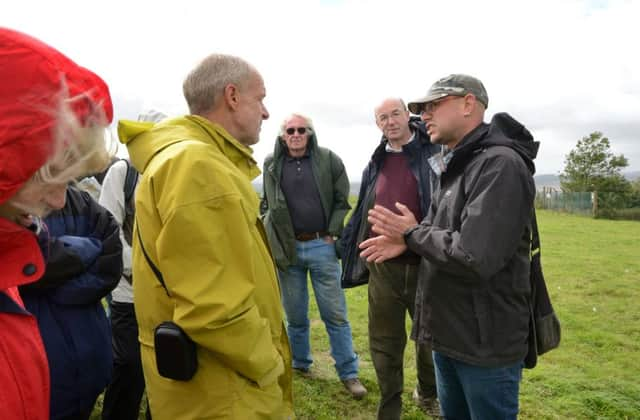Volunteers' experiences on Secrets of the High Woods


To mark National Volunteers’ Week, the team behind a South Downs National Park heritage project has spoken about the important work done by the project’s volunteers.
Secrets of the High Woods explores the history of the ancient woods of West Sussex, revealing hidden archaeology and the host of human stories hidden in the landscape through research and LiDAR technology.
Advertisement
Hide AdAdvertisement
Hide AdSarah Rance-Riley, project manager, said: “Over the past three years our army of volunteers have put so much work into rediscovering a lost landscape using physical evidence on the ground; researching old maps and documents; and interviewing local people to understand how people have lived here from the first farmers to the present day. We’ve been so grateful for the commitment and passion of our volunteers, it’s not exaggerating to say that Secrets of the High Woods wouldn’t exist without them.”
Volunteers from Secrets of the High Woods have also spoken about their experiences on the project.
Tim Burr said: “I’ve been involved in excavations and ‘ground truthing’, identifying objects seen on LiDAR.
“The most striking thing we have found so far is the extensive system of fields that once covered part of the High Woods area.These are maybe 3,000 years old, and have showed up on the LiDAR scans.
Advertisement
Hide AdAdvertisement
Hide Ad“As this is a public archaeology project, it means that the volunteers are making a really meaningful contribution to the research, and I look forward to continue exploring the landscape through this project.”
Sue Brown said: “When the South Downs National Park Authority had this LiDAR survey done, it revealed enormous amounts of archaeology that people didn’t know was there.
“There are burrows and ditches, and you can see how the landscape is shaped by the Iron Age, Bronze Age, and the Romans.
“Working on this project is absolutely fascinating, and we’ve had some great training in using the tablets to explore what has been revealed by the LiDAR survey. I’ve also had the opportunity to go to the record offices and learn how to look at old maps and records - I’ve really learned a lot, and I’ve very much enjoyed the project so far.”
Advertisement
Hide AdAdvertisement
Hide AdElaine Ireland said: “I was drawn to this project because the title is so interesting. I’ve been working on the oral history side of the project, and I have spoken to about 10 people so far about their memories of the woodland.
“It’s been a marvellous experience so far, and I’ve met some wonderful people, such as Chris North, the Gamekeeper at Arundel Castle.
“The project team have provided a great structure which means that the volunteers have so many opportunities. I really appreciate how welcoming the team is, and how open they are to helping us explore our own interests on the project. It’s been a rewarding experience so far.”
James McInnes said: “I have been researching the history of deer parks between Arundel and Petersfield, principally by using record offices such as the one in Chichester.
Advertisement
Hide AdAdvertisement
Hide Ad“I have found that during the Middle Ages, there were at least 26 deer parks within the study area, and every one could be researched in great detail.
“I have learned that many of the parks had beech hedges as boundaries, meaning that they don’t show up on archaeological excavations, and that deer parks began to go out of use in the 1580s as the Earl of Arundel owed debts to Queen Elizabeth.
“Without Secrets of the High Woods, we wouldn’t have all this new information, and I feel that this projects has really altered the way that volunteers view the landscape. We interpret it more intelligently now.
“Volunteering on this project has been an extremely good experience, and I have thoroughly enjoyed it. It’s been enormously successful - and I think the project team have been overwhelmed by the amount of volunteers who want to be involved!”
Advertisement
Hide AdAdvertisement
Hide AdFind out more at www.southdowns.gov.uk/discover/heritage/secrets-of-the-high-woods.
Don’t miss out on all the latest breaking news where you live.
Here are four ways you can be sure you’ll be amongst the first to know what’s going on.
1) Make our website your homepage
2) Like our Facebook page
3) Follow us on Twitter
4) Register with us by clicking on ‘sign in’ (top right corner). You can then receive our daily newsletter AND add your point of view to stories that you read here.
And do share with your family and friends - so they don’t miss out!
Always the first with your local news.
Be part of it.